
|
 |
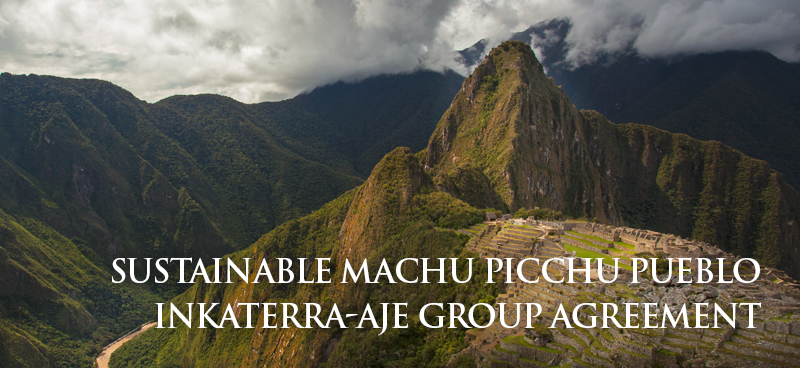
|
|
Committed to the UN Convention on Biological Diversity’s Business and Biodiversity agreement signed at COP20, Inkaterra Asociación and AJE Group – a Peruvian family-owned multinational beverage company, expanded to 23 countries in Latin America, Asia and Africa – have signed a strategic partnership to lead diverse sustainability initiatives in benefit of Machu Picchu’s cultural and natural heritage. One of these projects was last year’s donation of a waste compacting machine to process on a daily basis 14 tons of waste, transported by train to recycling plants. This initiative has been essential to address Machu Picchu’s waste management crisis, observed by UNESCO in 2016 when evaluating the inclusion of the Inca citadel in the list of World Heritage in Danger.
A biodiesel production plant at Inkaterra Machu Picchu Pueblo Hotel is also part of the AJE-Inkaterra alliance. Ready by June, the biodiesel plant will process burnt vegetable oil to avoid spills at the Vilcanota River facing Machu Picchu Pueblo. According to studies, one liter of burnt oil pollutes 1000 liters of water, thus Inkaterra is encouraging local houses, hotels and restaurants to donate used organic oils. Locally-produced biodiesel mitigates the use of fossil fuels and reduces the carbon footprint caused by fuel transportation for 1150km from Lima to Machu Picchu. “This is just the beginning of a successful alliance that aims to turn Machu Picchu into a global example of sustainability for all travel destinations before 2021, as part of Peru’s Bicentennial Plan,” declared Inkaterra Founder and CEO José Koechlin.
|
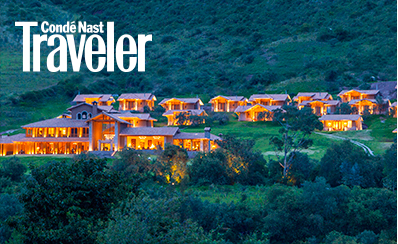
|
|
FIVE INKATERRA HOTELS NOMINATED FOR 2017 READER’S CHOICE AWARDS
Celebrating the best travel experiences in the world as voted for by the readers of Condé Nast Traveler, the 2017 Reader’s Choice Awards picks the most appealing countries, cities and islands; top hotels, resorts, restaurants and spas; and the most luxurious airlines, airports and cruise lines.
This year, five properties from Inkaterra portfolio have been nominated – Inkaterra Reserva Amazónica and Inkaterra Hacienda Concepción, deep in the megadiverse Amazon rainforest; Inkaterra Machu Picchu Pueblo Hotel, tucked away in the Andean cloud forest; Inkaterra La Casona, Cusco’s first boutique hotel; and Inkaterra Hacienda Urubamba, surrounded by green mountains of the Sacred Valley of the Incas. Click here to vote until July 1st and you will be entered to win a 15-day Viking Homelands Cruise for two, over the clear waters of Scandinavia.
|
|
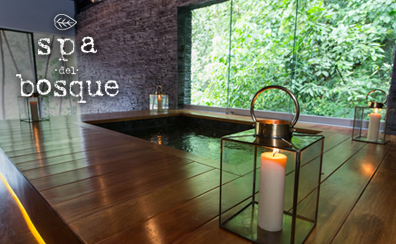
|
|
SPA DEL BOSQUE OPENS AT EL MAPI BYINKATERRA
With a smart and contemporary concept amidst the picturesque Machu Picchu Pueblo, El MaPi byInkaterra welcomes guests to an unfussy, down-to-earth break in a pleasant and lively atmosphere before visiting Peru’s most famous destination – the Historic Sanctuary of Machu Picchu.
Creating an ambience of order and wellbeing, El MaPi has recently opened Spa del Bosque, the largest health resort in Machu Picchu Pueblo. Located in the hotel’s top floor with panoramic views of the Andean cloud forest, the elegant and organic Spa del Bosque has four private treatment rooms for comprehensive body therapies, which are part of a circuit with a pinewood sauna, hydro-massage showers, a heated plunge pool and hydration zone. Spa del Bosque uses 100% organic products derived from in-house botanical extracts, as well as Andean grains and herbs, creating a holistic environment for the energetic well-being of Inkaterra travelers.
|
|
NEWS FROM OUR DESTINATIONS |
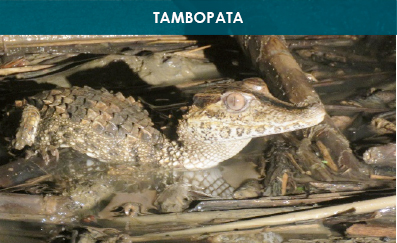
|
|
APRIL SIGHTINGS AT INKATERRA HACIENDA CONCEPCIÓN
The high season has started with enthralling sightings achieved by Inkaterra Explorer Guides in hotel grounds and areas of influence, confirming the unique biodiversity living in the Amazon rainforest of Madre de Dios.
On April 20, travelers spotted two giant river otters (Pteronura brasiliensis) surfacing the waters of Cocha Concepción. Six days later, a troop of about 80 squirrel monkeys (Saimiri sciureus) was found running across the trees and eating native cacao fruit nurtured within property. The same day, a Cuvier’s dwarf caiman (Paleosuchus palpebrosus) was found resting in the riverbed during a night excursion. And on the 27th, a 7-foot juvenile anaconda (Eunectes murinus) was seen crawling by the inland collpa, a clay-lick located about 15 minutes away from the lodge.
Click here to explore all Inkaterra flora and fauna sightings.
|
|
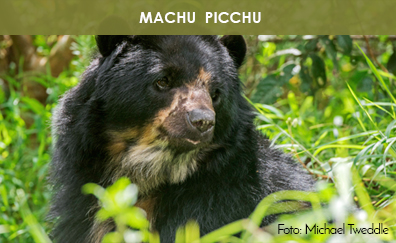
|
|
SMITHSONIAN NEWS FEATURES WORKSHOP ON ANDEAN BEAR CONSERVATION
The story An Andean Bear Adventure (Part II) appeared in the April 2017 issue of Smithsonian Conservation Biology Institute News as a follow-up to the Smithsonian’s first visit to the Andean Bear Conservation Center at Inkaterra, back in June 2016. Eight months later, a team of specialists was back to Machu Picchu for the first-ever Smithsonian Course on Management, Rehabilitation and Conservation of Andean Bears at Inkaterra Machu Picchu Pueblo Hotel, co-organized by NGO Inkaterra Asociación.
With 43 participants from Peru, Bolivia and Colombia, the pioneering workshop developed a strategy to safeguard specimens in captivity of the Andean or Spectacled Bear (Tremarctos ornatus), only bear species native to South America. In the following Q&A, the Smithsonian crew members share their experience in Peru and talk about training techniques featured in the course, as well as the importance of saving Andean Bears.
|
|
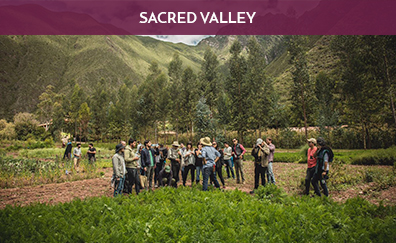
|
|
NEW WORLDER REVIEWS MOMENTO ANDES 2017
Conceived by Virgilio Martinez (this year’s winner of the Chefs Choice Award at the World’s 50 Best) and co-organized by Inkaterra, Central Restaurant and NGO Mater Iniciativa, the first-ever Momento Andes 2017 gathered scientists, artists, farmers, craftsmen and internationally renowned chefs for a three-day multidisciplinary workshop to explore the unique diversity of Peruvian food resources through its many flavors, colors and benefits.
New Worlder, source of information of food, culture and travel in the Americas, covered this innovative event at Inkaterra Hacienda Urubamba with the chronicle ‘The Next Great Age of Peruvian Cuisine’. “Peru has the biodiversity of Indonesia and a history as extensive as Egypt. On their own, each of those things makes for profound culinary conditions. Combined, they provide a gastronomic framework that is without equal,” points out Nicholas Gill, New Worlder collaborator and co-author of Phaidon’s new table book Central.
|
|
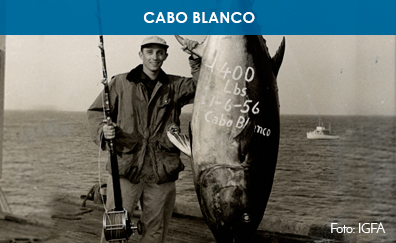
|
|
TUNA WORLD RECORD’S 60TH ANNIVERSARY COMMEMORATED IN EL COMERCIO
Two prevailing world records brought Cabo Blanco into the spotlight as the sport fishing mecca of the 50’s and 60’s – the 1560lb black marlin (Makaira indica), all-tackle world record landed by Alfred Glassell, Jr. in August 1953, and the 434lb bigeye tuna (Thunnus obesus) caught by Dr. Russell Lee on the 17th of April, 1957. El Comercio newspaper recalls 60 years of Dr. Lee’s feat with an in-depth look at Cabo Blanco’s golden age.
The chronicle also features Inkaterra’s ecotourism projects to recover this legendary fishing cove, where 70% of Peru’s marine diversity is found. “An initiative to declare Cabo Blanco’s artisanal fishing [raft and sail] as Living Cultural Landscape is in the works, aiming to have this ancestral tradition declared as Intangible Heritage by UNESCO,” explains author José Tsang. Click here to read the full article.
|
|
INKATERRA PRESS ROOM |
 |
|
AWARDS & RECOGNITIONS |
 |
|
|


